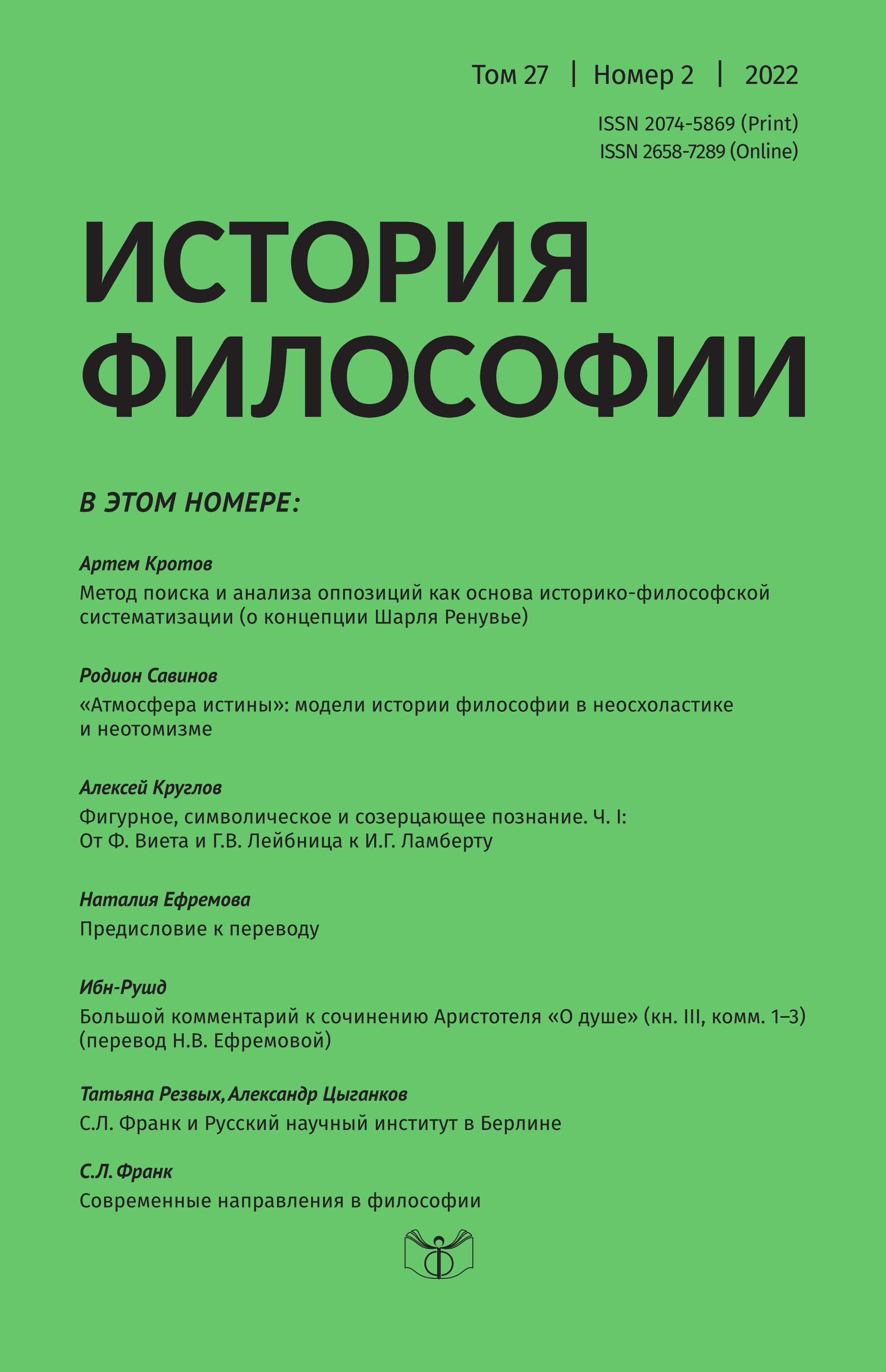Figurative, Symbolic and Contemplative Cognition Part I: From F. Viet and G.W. Leibniz to J.H. Lambert
Keywords:
symbolic cognition, intuitive cognition, figurative synthesis, speciosa, imagination, image, scheme, G.W. Leibniz, Chr. Wolff, Chr. A. Crusius, I. KantAbstract
By providing symbolic (operates by means of signs) and intuitive (operates without signs) types of cognition, G.W. Leibniz in the “Reasoning about cognition, truth and ideas” laid the foundation for the problem of visibility discussions in 18th century. Proceeding from Leibniz’s ideas, Chr. Wolff in the “German metaphysics” built a detailed doctrine about figurative and contemplating cognition, giving priority in the field of application and the degree of clarity to the first type. Wolff’s doctrine almost immediately became classic and found a lot of supporters. J.G. Darjes and G.F. Meier moved the metaphysical distinction of cognition distinctions to logic. A.G. Baumgarten in the “Metaphysics” offered a new criterion of symbolic and intuitive cognition distinction. J.N. Tetens scrutinized the opposition of symbolic and contemplating cognition from the point of a priori and a posteriori opposition. J.H. Lambert in the “New Organon” brings the interest back to the figurative cognition.

